Securing Pamir Ice Memory: Two Deep Cores Recovered at Kon Chukurbashi
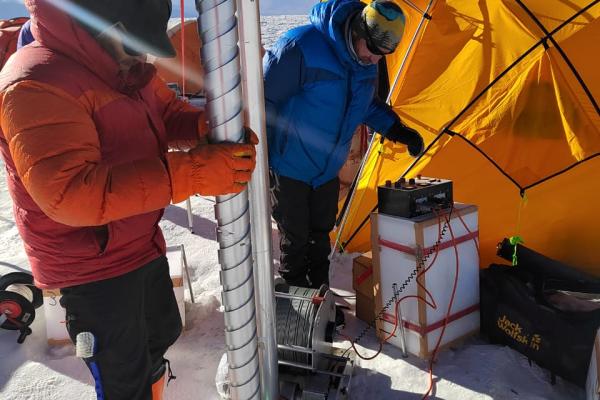
An international team under the Swiss Polar Institute's PAMIR Flagship Initiative has completed a five-week, high-altitude drilling campaign on the Kon Chukurbashi Ice Cap in Tajikistan's Pamir Mountains—part of High Mountain Asia's "Third Pole", recovering two bedrock-reaching ice cores of roughly 105 meters at about 5,800 meters above sea level to secure a rare, high-elevation Asian climate archive before it is degraded by warming.
Co-led by the University of Fribourg with the Tajikistan Academy of Sciences and including the University of Zurich, the Swiss Federal Institute for Forest, Snow and Landscape Research (WSL), Nagoya University, Hokkaido University, The Ohio State University (as a scientific partner), and technical support from the University of Bern—and funded by the Swiss Polar Institute with support from the Ice Memory Foundation.
The expedition's Field drilling was led in part by Researcher Stanislav Kutuzov (School of Earth Sciences), who helped lead the drilling effort and guided site selection and operations, a member of the Ohio State Byrd Polar and Climate Research Center's Ice Core Paleoclimatology group.
One core will be analyzed by PAMIR collaborators to reconstruct temperature, snowfall, aerosol transport, and human impacts across Central Asia, while the second will be conserved within the Ice Memory Sanctuary in Antarctica, an outcome that preserves irreplaceable evidence for future science and informs adaptation, water-resource planning, and hazard assessment for a region that sustains millions downstream.
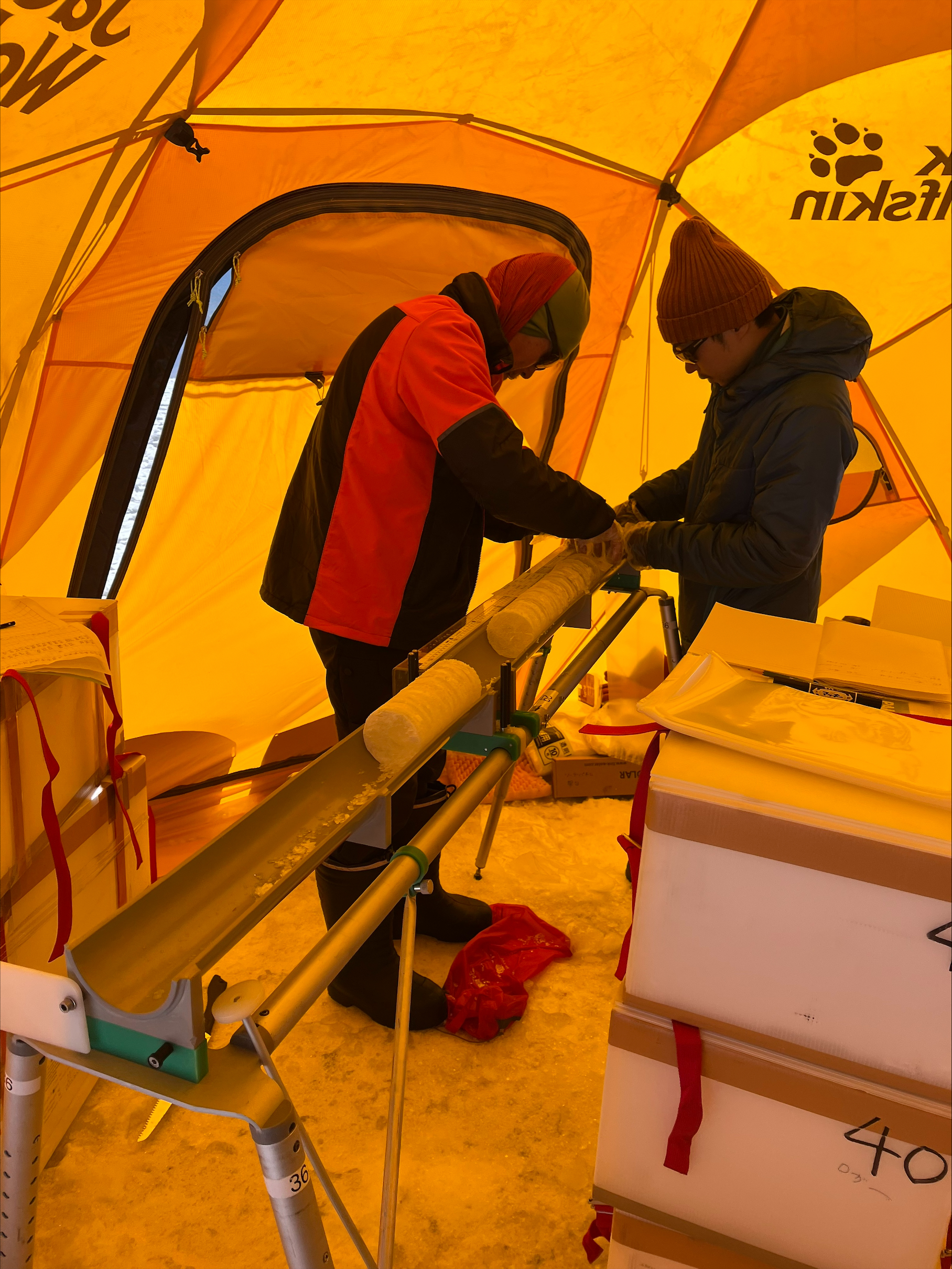
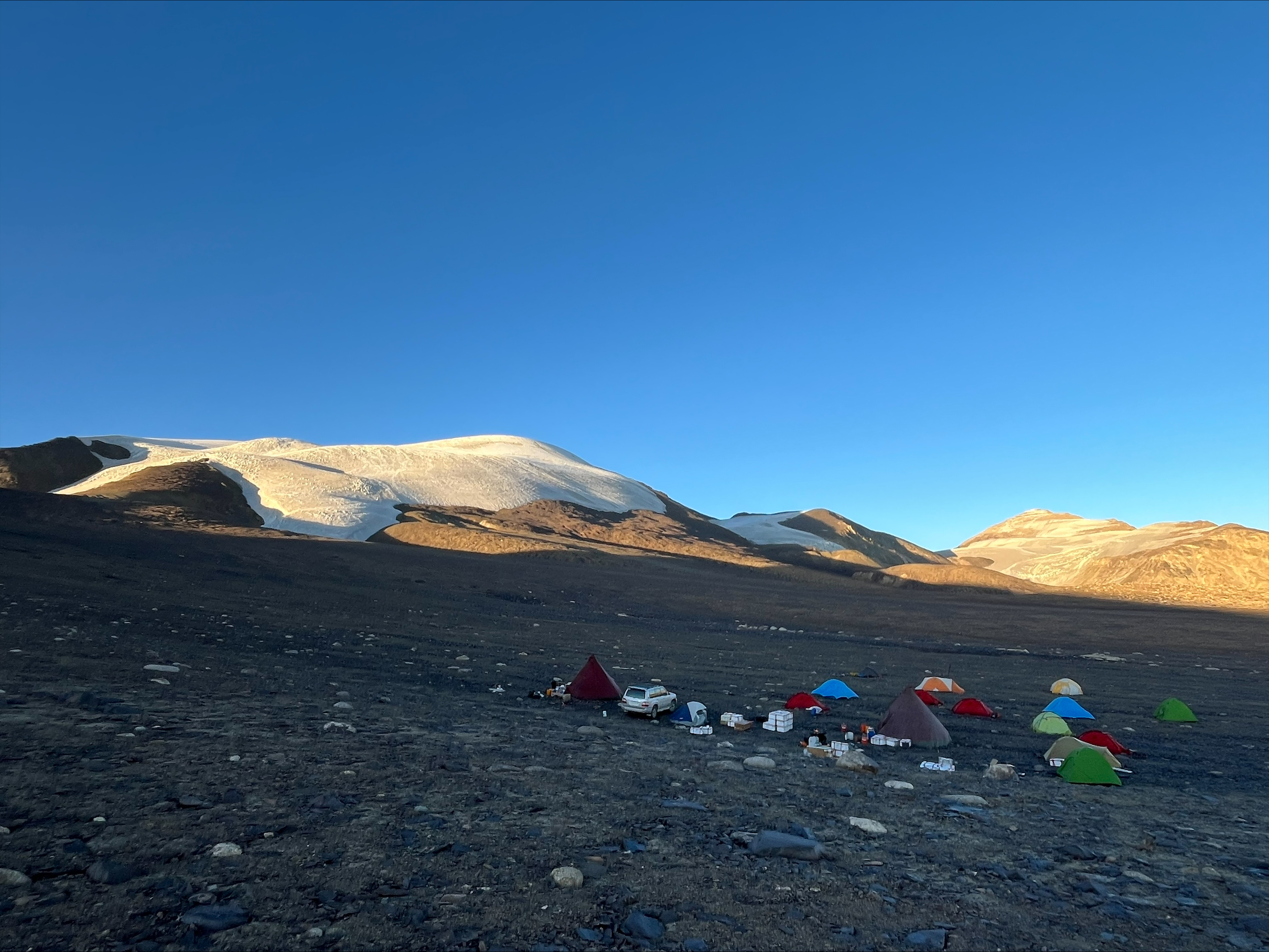
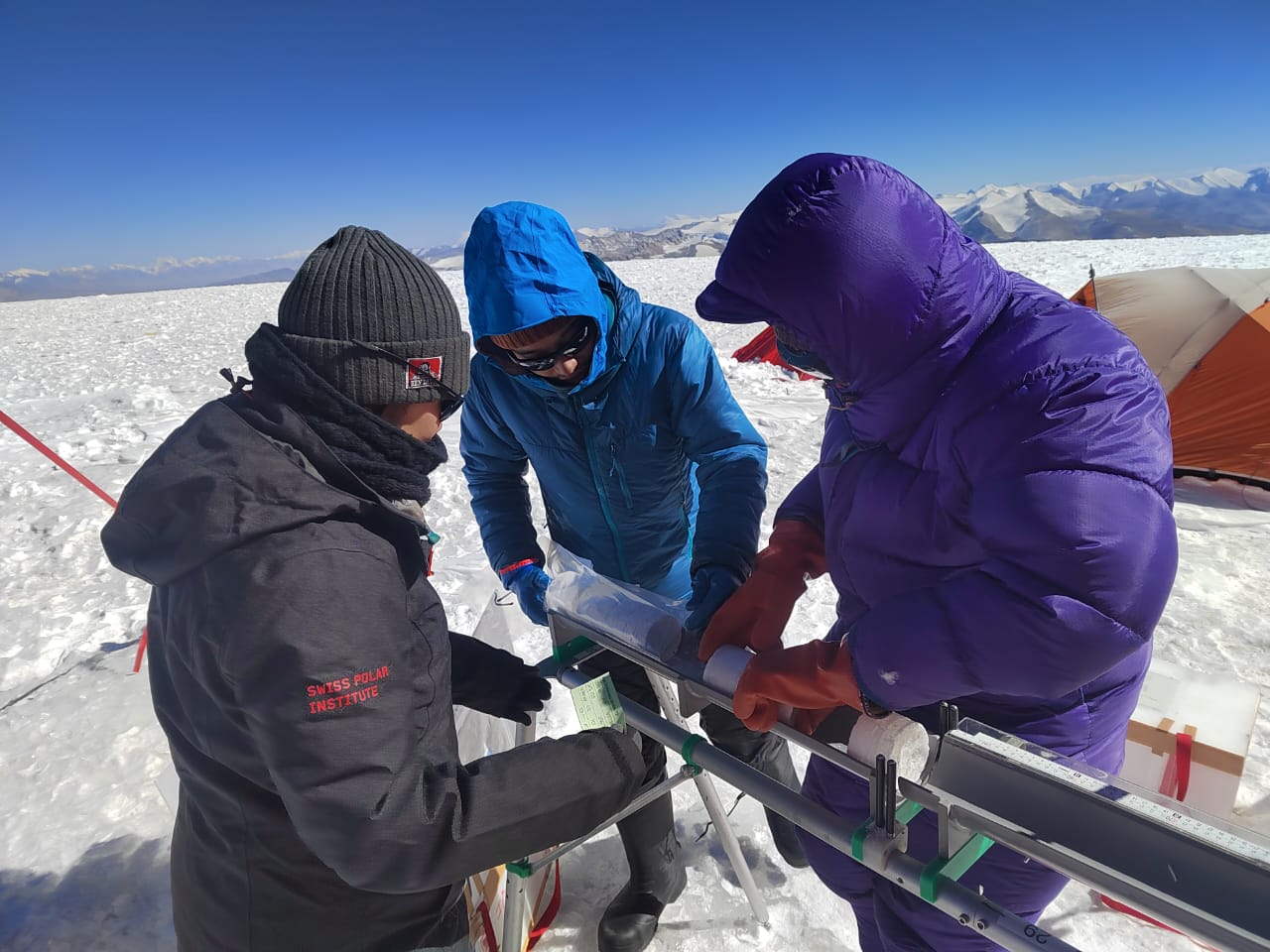
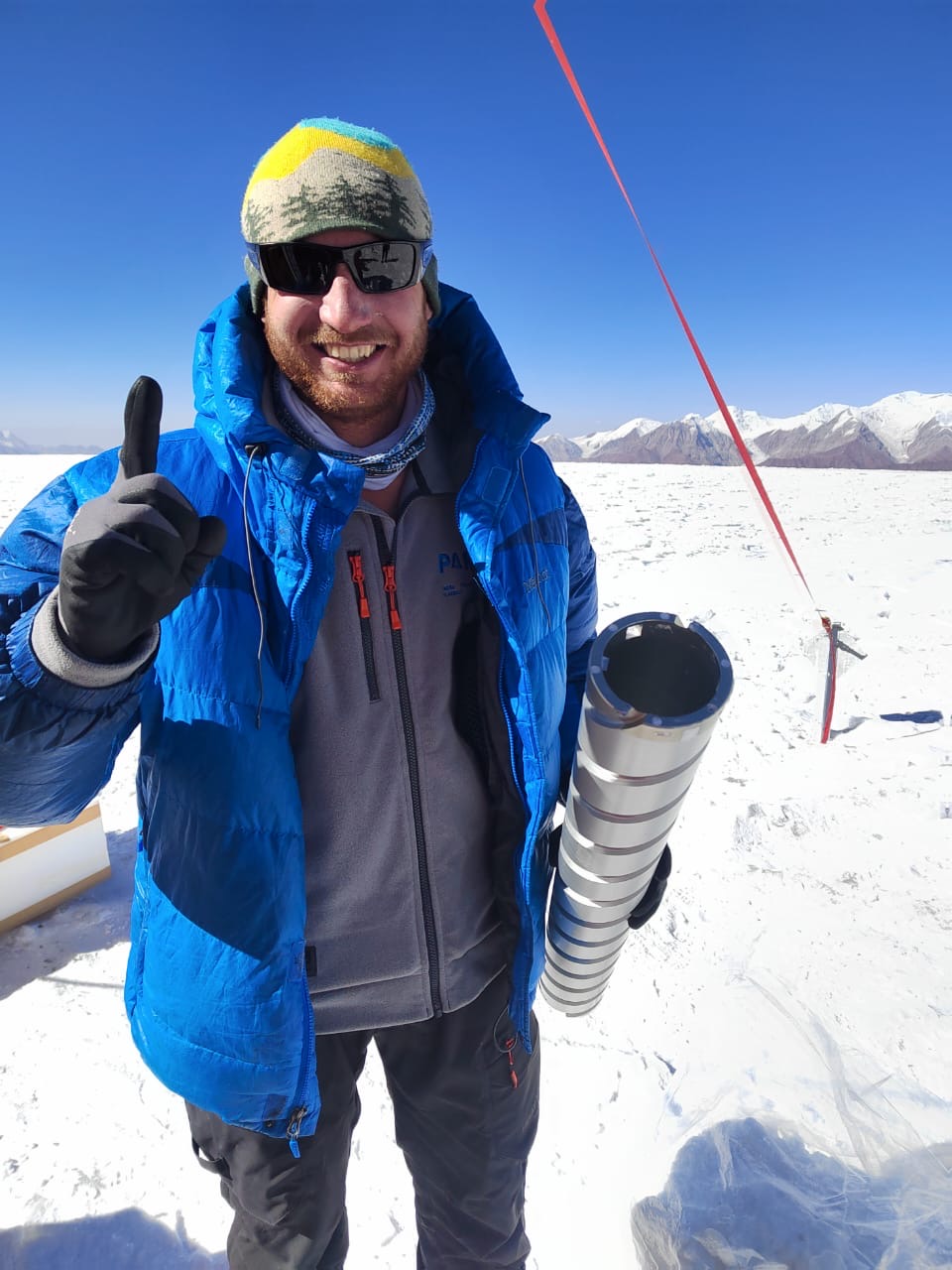
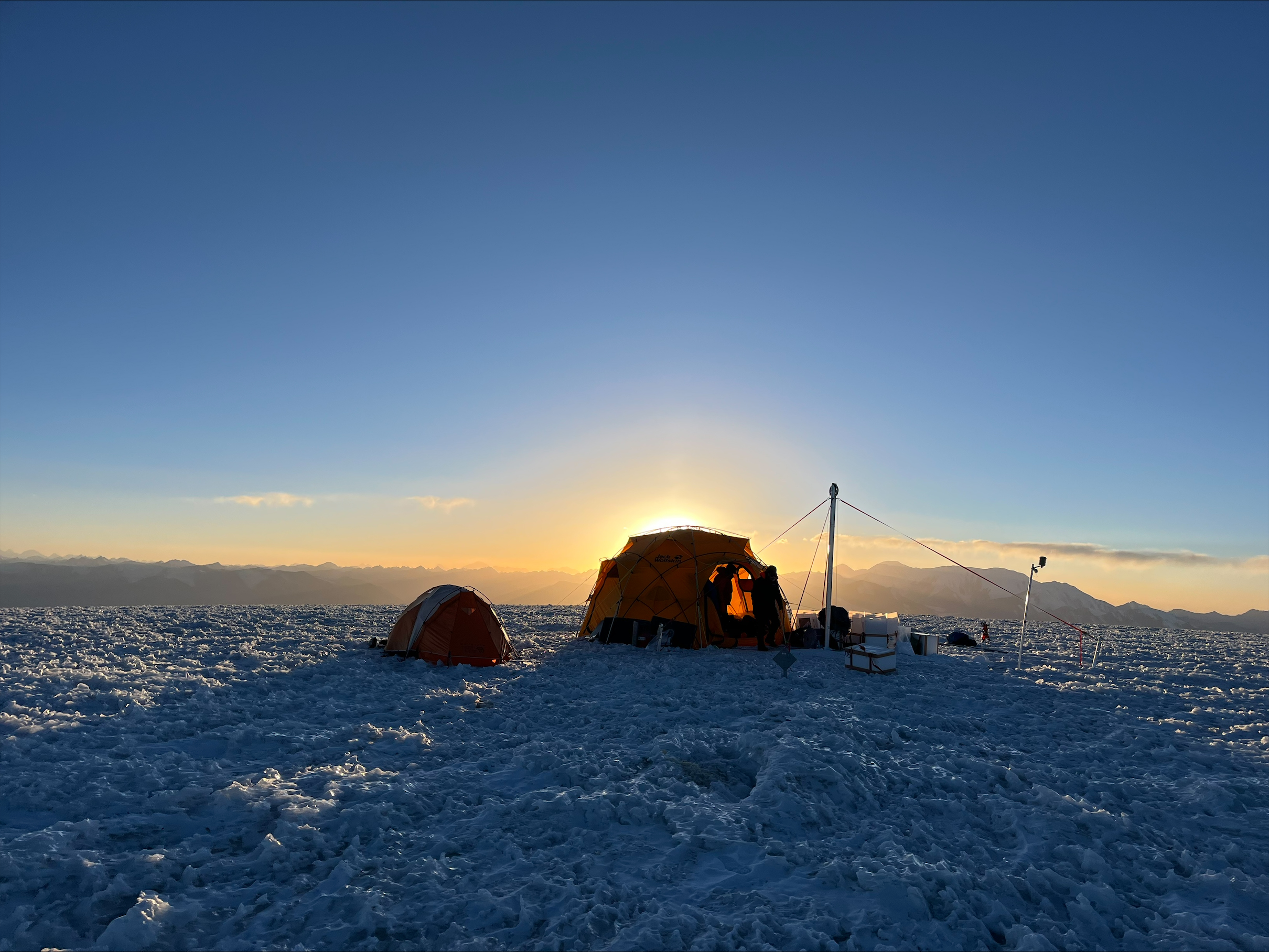
related News Items:
- New international expedition seeks to preserve ice memory from Tajikistan’s Pamir glacier
- A new international expedition attempts to reveal and preserve the ice memory from the iconic Pamir glaciers in Central Asia, Tajikistan., PRESS RELEASE 28th September 2025
- PAMIR Team secures two ice cores over 100 metres long from the Kon Chukurbashi Ice Cap in Tajikistan, Swiss Polar Institute, 6th October 2025
- A crucial drilling expedition to Tajikistan - on the glaciers of the Pamir Region, Central Asia, By Ice Memory Foundatio10 July 2025
- SPI Flagship Initiative “PAMIR” to contribute to the Ice Memory Foundation climate archive with deep ice core
